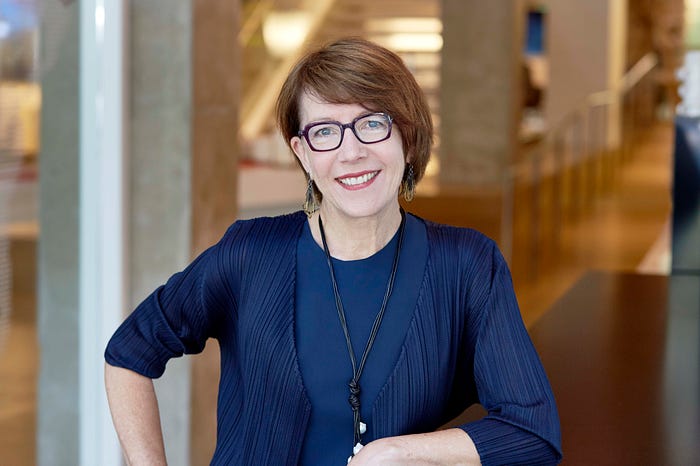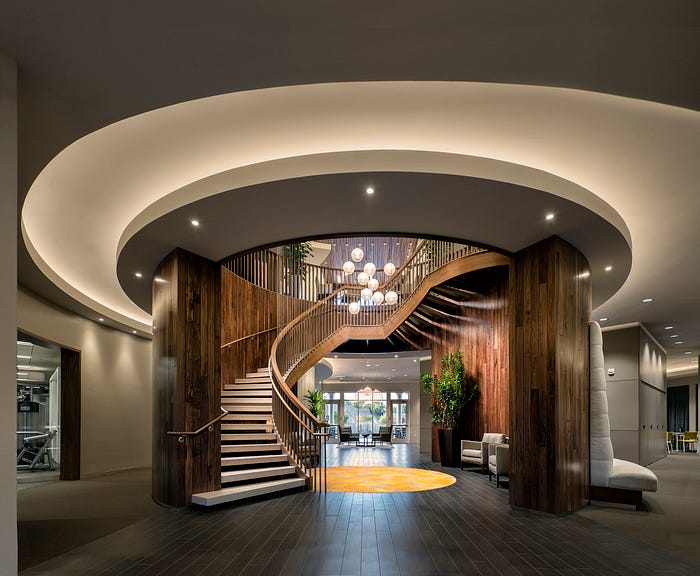Equity by Design: Redefining “Senior Living” | A Conversation with Stephanie Firestone, Esther Greenhouse, and Dr. Bill Thomas

When the COVID-19 pandemic struck the United States in early 2020, it quickly exposed fundamental inequalities in the way our societies are built, with the “systematically reinforced…creation of underserved groups of people — namely, people of color, immigrants and older adults.”
Among the hardest hit by the crisis were senior citizens. In fact, according to The New York Times, at least 84,000 coronavirus deaths have been reported among residents and employees of nursing homes and other long-term care facilities for older adults in the United States, and as of Oct. 20, the virus has infected more than 540,000 people at some 21,000 facilities. Relegated to often disinvested and isolated living environments, the Center for Health Journalism also reported a spike in loneliness among nursing home residents amid the pandemic. The crisis reinvigorated calls from the gerontology community to rethink the way we design for the oldest segment of our population.

On today’s episode of the Gensler Design Exchange, Gensler’s firmwide senior living leader Tama Duffy Day interviews industry experts on essential principles to consider as we look at the current moment as a unique opportunity for change. Stephanie Firestone is a Senior Strategic Policy Advisor for Health & Age-Friendly Communities at AARP International; Dr. Bill Thomas is a geriatrician, industry trailblazer, and Independence Officer at Lifesprk; and Esther Greenhouse is a built environment strategist, environmental gerontologist, and the Strategic Director of the TC Age Friendly Center for Excellence. These three guests are collaborators on AARP International’s important Equity by Design webinar series dedicated to exploring different aspects of the active aging conversation.
“The Equity by Design dialogues are intended to help built environment professionals create physical housing and communities that enable people to function to their greatest ability, and that proactively address historic inequities that have led communities of color, in particular, to disproportionately struggle to attain basic health, safety and wellbeing.”
— Stephanie Firestone
BRINGING JOY INTO GERONTOLOGY
The Equity by Design dialogue series further explores Creating Enabling & Equitable Housing and Multigenerational Communities, a set of guiding principles for making our built environment, at every scale, a tool for disease prevention and the promotion of wellness for all. The principles emerged from a transatlantic convening of leaders — including Tama and our three guests — and they target designers, planners, developers, and other built environment sector professionals and influencers. These principles also inspired and informed PHEAL (Planning for Health Equity, Advocacy, and Leadership) Guiding Principles, developed by 77 individuals committed to creating a policy platform to reaffirm the need for public health and design professionals to work together to foster an environment of synergy with the purpose of empowering and elevating the voices of historically overburdened communities with health inequities in the time of COVID-19.
Supporting these findings, Gensler research also found that “actively aging” boomers are looking for well-designed housing options to support their lifestyles and allow them to live long, purposeful lives. Designing with (1) connectivity, (2) choice, (3) independence, and (4) wellness in mind, we can increase quality of life and “active” life expectancy.
“What we need is a radical reinterpretation of longevity that makes elders (and their needs) central to our collective pursuit of happiness and well-being.”

Environmental press (Murray, 1938) is a crucial factor to consider in the design of senior living facilities, or indeed, fully multigenerational communities. According to Esther Greenhouse’s enabling design theory:
“When there is poor fit between a person and their environment, the environment acts a stressor, pressing down on their abilities, pushing them to an artificially lower level of functioning. This can be prevented, and often reversed, by design which respects human variations, enabling people to function at their highest level possible.”
— Esther Greenhouse

At Willow Valley Communities and Atria at Villages of Windsor, designed by Gensler, varying amenities and frictionless design provide a healthy level of environmental press for residents within a tastefully designed resort-like environment that inspires multigenerational engagement. Units are intentionally adaptable to meet the changing needs of residents, and at The Mosaic — a new 20-floor, 150-unit luxury senior living residence located in downtown Lancaster, Penn. — the club lounge, French bakery and Ballroom extend community engagement by being available for resident and public use.
When we design for the oldest and youngest generations, ultimately, we all benefit. With this in mind, every industry should seek to design for, entice, and delight the new aging consumer.
BUILDING AGE-FRIENDLY CITIES

While we tackle the redesign of assisted living facilities stateside, we can look abroad to China and Japan for guidance on establishing fully integrated multigenerational communities over time.
At the Gensler-designed Taihu Health Town in Huzhou, China, we’re relooking at how urban planning must also adapt to meet the needs of our growing elderly populations worldwide. Possessing unique natural and cultural resources, Taihu is aligned with a vision for leisure activities, resort destinations, and elevated elder care. The Taihu Health Town Master Plan sets a course for Taihu to benefit from the integration of health care, elder care, hot springs, and culture. The four functions of Taihu Health Town vision — which include health care, nursing communities, a hot spring resort, cultural tourism — are developed as separate and complementing systems.
From Japan, currently the fastest-aging society on earth with 40 percent of residents already at 65 years of age or older, AARP International shares lessons learned on intergenerational housing at scale from visiting Kashiwa City’s Toyoshikidai housing complex revitalization project, an effort to intentionally address the health and well-being of all generations via urban infrastructure. AARP International works closely with the World Health Organization (WHO) on initiatives such as the WHO’s Global Network for Age-friendly Cities and Communities. AARP runs the U.S. affiliate of this global network and offers guidance and resources for communities and states looking to create age-friendly infrastructures, both physical and social.
Register for the upcoming AARP International ‘Equity by Design’ webinar HERE.
Subscribe to Gensler Design Exchange on Soundcloud, Apple Podcasts, iHeart Radio, Spotify, Alexa AnyPod, Google Play, Stitcher, and Libsyn — or anywhere you listen to podcasts.
As always, thanks for tuning in!
